Ви повинні увійти в систему
-
WróćX
-
компоненти
-
-
Category
-
Напівпровідники
- Діоди
- Тиристори
-
Електро-ізольовані модулі
- Електроізольовані модулі | ВІШАЙ (ІЧ)
- Електроізольовані модулі | INFINEON (EUPEC)
- Електроізольовані модулі | Семікрон
- Електроізольовані модулі | POWEREX
- Електроізольовані модулі | IXYS
- Електроізольовані модулі | ПОСЕЙКО
- Електроізольовані модулі | ABB
- Електроізольовані модулі | ТЕХСЕМ
- Przejdź do podkategorii
- Випрямні мости
-
Транзистори
- Транзистори | GeneSiC
- Модулі SiC MOSFET | Mitsubishi
- Модулі SiC MOSFET | STARPOWER
- Модулі ABB SiC MOSFET
- Модулі IGBT | MITSUBISHI
- Транзисторні модулі | MITSUBISHI
- Модулі MOSFET | MITSUBISHI
- Транзисторні модулі | ABB
- Модулі IGBT | POWEREX
- Модулі IGBT | INFINEON (EUPEC)
- Напівпровідникові елементи з карбіду кремнію (SiC)
- Przejdź do podkategorii
- Драйвери
- Блоки потужності
- Przejdź do podkategorii
- Електричні перетворювачі
-
Пасивні компоненти (конденсатори, резистори, запобіжники, фільтри)
- Резистори
-
Запобіжники
- Мініатюрні запобіжники для електронних плат серії ABC і AGC
- Швидкі трубчасті запобіжники
- Повільні запобіжники з характеристиками GL / GG і AM
- Ультрашвидкі плавкі запобіжники
- Швидкі запобіжники: британський та американський стандарт
- Швидкі запобіжники. Європейський стандарт
- Тягові запобіжники
- Високовольтні запобіжні
- Przejdź do podkategorii
-
Конденсатори
- Конденсатори для електродвигунів
- Електролітичні конденсатори
- Снабберні конденсатори
- Конденсатори потужності
- Конденсатори для DC ланцюгів
- Конденсатори для компенсації пасивної потужності
- Високовольтні конденсатори
- Конденсатори великої потужності для індукційного нагріву
- Конденсатори для зберігання імпульсів та енергії
- Конденсатори DC LINK
- Конденсатори для ланцюгів змінного / постійного струму
- Przejdź do podkategorii
- EMI фільтри
- Іоністори (супер-конденсатори)
-
Захист від стрибків напруги
- Захист від перенапруги для коаксіального застосування
- Захист від перенапруг для систем відеоспостереження
- Захист від перенапруги для силових кабелів
- Розрядники перенапруги для світлодіодів
- Розрядники перенапруги для фотоелектрики
- Захист системи зважування
- Захист від перенапруги для Fieldbus
- Przejdź do podkategorii
- Przejdź do podkategorii
-
Реле та контактори
- Реле та контактори - теорія
- Напівпровідникові реле AC 3-фазні
- Напівпровідникові реле DC
- Контролери, системи управління та аксесуари
- Системи плавного пуску і реверсивні контактори
- Електромеханічні реле
- Контактори
- Оборотні перемикачі
-
Напівпровідникові реле AC 1-фазні
- РЕЛЕ AC 1-ФАЗНЫЕ СЕРИИ 1 D2425 | D2450
- Однофазное реле AC серии CWA и CWD
- Однофазное реле AC серии CMRA и CMRD
- Однофазное реле AC серии PS
- Реле AC двойное и четверное серии D24 D, TD24 Q, H12D48 D
- Однофазні твердотільні реле серії gn
- Однофазні напівпровідникові реле змінного струму, серія ckr
- Однофазні реле змінного струму ERDA та ERAA для DIN-рейки
- Однофазні реле змінного струму для струму 150А
- Подвійні твердотільні реле, інтегровані з радіатором для DIN-рейки
- Przejdź do podkategorii
- Напівпровідникові реле AC 1-фазні для друкованих плат
- Інтерфейсні реле
- Przejdź do podkategorii
- Індукційні компоненти
- Радіатори, варистори, термічний захист
- Вентилятори
- Кондиціонери, обладнання для шаф електричних, охолоджувачі
-
Батареї, зарядні пристрої, буферні блоки живлення та інвертори
- Батареї, зарядні пристрої - теоретичний опис
- Літій-іонні батареї. Спеціальні батареї. Система управління акумулятором (BMS)
- Батареї
- Зарядні пристрої та аксесуари
- Резервне джерело живлення ДБЖ та буферні джерела живлення
- Перетворювачі та аксесуари для фотоелектрики
- Зберігання енергії
- Паливні елементи
- Літій-іонні акумулятори
- Przejdź do podkategorii
-
Автоматика
- Futaba Drone Parts
- Кінцеві вимикачі, Мікровимикачі
- Датчики Перетворювачі
- Пірометри
- Лічильники, Реле часу, Панельні вимірювальні прилади
- Промислові захисні пристрої
- Світлові і звукові сигнальні установки
- Термокамери, Тепловізори
- LED-екрани
- Керуюча апаратура
-
Реєстратори
- Реєстратори температури з записом на стрічку і з цифровим індикатором - AL3000
- Мікропроцесорні реєстратори з екраном LCD серія KR2000
- Реєстратор KR5000
- Вимірювач з функцією реєстрації вологості і температури HN-CH
- Експлуатаційні матеріали для реєстраторів
- Компактний графічний реєстратор 71VR1
- Реєстратор KR 3000
- Реєстратор PC серії R1M
- Реєстратор PC серії R2M
- Реєстратор PC, USB, 12 ізольованих входів – RZMS
- Реєстратор PC, USB, 12 ізольованих входів – RZUS
- Przejdź do podkategorii
- Przejdź do podkategorii
-
Провід, літцендрат, гофровані рукави, гнучкі з'єднання
- Дроти
- Багатожильні дроти Lica
-
Кабелі і дроти для спеціальних застосувань
- Подовжувальні та компенсаційні дроти
- Дроти для термопар
- Приєднувальні дроти для датчиків PT
- Багатожильні дроти темп. -60C до +1400C
- Дроти середньої напруги
- Дроти запалювання
- Нагрівальні дроти
- Одножильні дроти темп. -60C до +450C
- Залізничні дроти
- Нагрівальні дроти для вибухонебезпечних зон
- Przejdź do podkategorii
- Оболонки
-
Плетені кабелі
- Плоскі плетені кабелі
- Круглі плетені кабелі
- Дуже гнучкі плетені кабелі - плоскі
- Дуже гнучкі плетені кабелі - круглі
- Мідні циліндричні плетені кабелі
- Мідні циліндричні плетені кабелі і кожуха
- Гнучкі заземлювальні стрічки
- Циліндричні плетені дроти з лудженої і нержавіючої сталі
- Мідні ізольовані плетені дроти PCV - температура до 85 градусів C
- Плоскі алюмінієві плетені дроти
- З'єднувальний набір - плетені дроти і трубки
- Przejdź do podkategorii
- Аксесуари для тяги
- Кабельні наконечники
- Ізольовані еластичні шини
- Багатошарові гнучкі шини
- Системи прокладки кабелю (PESZLE)
- Шланги
- Przejdź do podkategorii
- Zobacz wszystkie kategorie
-
Напівпровідники
-
-
- Постачальники
-
додатки
- Energy bank
- ІНДУКЦІЙНИЙ НАГРІВ
- Автоматизація HVAC
- Верстати з ЧПУ
- ВИМІРЮВАННЯ ТА РЕГУЛЮВАННЯ ТЕМПЕРАТУРИ
- Вимірювання та регулювання температури
- ГІРНИЧОДОБУВНА ПРОМИСЛОВІСТЬ, СТАЛЕЛИВАРНІ КОМБІНАТИ, ГЗК
- ДВИГУНИ І ТРАНСФОРМАТОРИ
- ЕНЕРГЕТИКА
- ЗВАРЮВАЛЬНІ АПАРАТИ
- КОМПЛЕКТУЮЧІ ДЛЯ РОЗПОДІЛЬНИХ, ТЕЛЕКОМУНІКАЦІЙНИХ ШАФ І ШАФ УПРАВЛІННЯ
- МАШИНИ ДЛЯ ДЕРЕВООБРОБКИ ТА СУШІННЯ ДЕРЕВИНИ
- ПОЛІГРАФІЯ
- ПРИВІД ПОСТІЙНОГО І ЗМІННОГО СТРУМУ
- ПРИЛАДИ ТА ОБЛАДНАННЯ ДЛЯ ВИБУХОНЕБЕЗПЕЧНИХ ЗОН (EX)
- ПРИСТРОЇ БЕЗПЕРЕБІЙНОГО ЖИВЛЕННЯ (UPS) І ВИПРЯМЛЯЧІ
- ПРОМИСЛОВІ ЗАСОБИ ЗАХИСТУ
- ПРОМИСЛОВА АВТОМАТИКА
- ТЕРМОФОРМОВОЧНІ МАШИНИ
- ТЯГОВИЙ ПРИВІД
-
монтаж
-
-
Індуктори
-
-
Індукційні прилади
-
-
https://www.dacpol.eu/pl/naprawy-i-modernizacje
-
-
Сервіс
-
- Контакт
- Zobacz wszystkie kategorie
Wireless communication

Technological development in the whole history has never been progressing as quickly - practically every area of our life has been transformed in the last several decades and is continuously going through evolution, with which we most often can’t keep up, and also usually don’t notice it because all these changes naturally become a part of our lives.
Wireless communication is rapidly replacing cable technology and becoming a basic method of communication in daily life, production workshops, services and commercial sectors.
How does wireless communication (Wi-Fi) work?
Wireless communication technology, also called Wi-Fi, is currently one of the most popular connection methods. This type of technology transfers data not through a cable, but through electromagnetic waves such as radio waves, infrared light or satellite signals. This method, although it can do the same tasks as cable communication, provides extra mobility, simplicity of usage and saving time and money while installing the system. Wireless communication is also especially useful in emergency situations or in remote work.
Wireless communication allows for:
- data transmission in distance of several (e.g. TV remote control) to numerous thousands of km (e.g. radio communication;
- application in mobile phones (3G/4G), wireless internet, smart homes (e.g. door lock, opening garage), GPS, headphones, etc.;
- application in communication systems between vehicles (V2V), identification systems with sensors and radio identification (RFID), and also in air and sea transport.
Types of wireless networks
There are special standards of using wireless communication, and is divided into four categories:
- Wireless Personal Area Network, WPAN,
- Wireless Local Area Network, WLAN,
- Wireless Metropolitan Area Network, WMAN,
- Wireless Wide Area Network, WWAN.
Application of wireless technology
Mobile technology
Mobile network technology is called WWAN - providing connectivity on huge distances of cities and countries. Mobile phones use satellite systems such as: 2G; Long Term Evolution (LTE); GSM, CDMA 2000, CDPD and Mobitex.
Third generation systems (3G) are so-called Universal Mobile Telecommunication System (UMTS) - allow for access to the internet, data, multimedia, etc. There is also generation 3.5 and 3.75, including High Speed Downlink Packet Access (HSDPA) and High Speed Uplink Packet Access (HSUPA) - HSDPA allows for 2 Mb/s data download speed, and HSUPA 1,45 Mb/s.
Fourth generation (4G) provides broadband connection with the internet e.g. thanks to wireless modems. The speed of data download reaches from 100 Mb/s to 1 Gb/s, and sending to 60 Mb/s.
NFC (Near Field Communication)
Current NFC devices are commonly used in contactless payments and social media (for sharing contacts, pictures, videos and files). Near Field Communication (NFC) is short distance connection technology, which allows for communication between devices after direct contact. NFC works with a frequency of 13,56 MHz and provides data transmission up to 424 kb/s at a distance of about 10 cm. This type of technology is present in modern models of smartphones, tablets and other devices, and provides safety after contacting proper devices with each other and which are able to use this type of communication.
RFID technology
Radio identification (RFID) is short-distance, automatic and contactless, which uses radio electromagnetic fields to receive and read information of a given object from data saved on an identifier. RFID technology is commonly used for following and identifying resources and devices though an antenna. RFID range is from 1 to 12 meters, and speed of 640 kb/s.
Bluetooth
Bluetooth's connection uses WPAN technology - wireless transfer of data for short distances. This type of technology for years has been commonly used in mobile phones, headphones, computers, laptops, GPS, and car radios. Bluetooth uses a radio system and is intended for short-distance connection.
Zigbee technology
It is a wireless network with small power, intended for sending data of low speed and short distance. It is usually used in small digital radio transmitters in home automatics, sensors, medical devices, control systems e.g. light systems and home safety measures, etc. There is also a ZigBee version - ZigBee PRO protocol, which provides additional possibilities e.g. roads, jumps in network, maximum number of devices and network safety.
Z-Wave (WPAN) technology
It is a wireless technology working in radio frequencies - guarantees the possibility of controlling home automatics through a smartphone and managing communication between smart devices e.g. light control, locks and thermostats.
Wi-Fi (WLAN)
It is a local wireless network technology, using radio waves. Provides fast internet connection and access to it from any location e.g. public places, private institutions, homes, etc. Wi-Fi allows for connecting to the network to many devices at the same time, such as computers, phones, printers. It can be easily configured or extended through extra radio Wi-Fi cards for other devices. Benefits of Wi-Fi are lack of cables, lower costs and mobility.
LoRa (LPWAN) and Sigfox (LPWAN) technology
LoRa is a protocol of LoRaWAN - it provides long-distance connection and can be used in the creation of LoT. It is a wireless technology of transferring data with small speed for big distances - most often used in industrial sectors, research and medical fields, to provide big range communication between remote sensors connected to the network. LoRa is especially useful for smart measurements, monitoring inventory, vending machines, and automotive.
Sigfox technology is similar to LoRa, but it’s closed network. Sigfox is a wireless connection with a low power intake, also used in IoT.
World without wireless communication - why can't we live without it?
Today, almost all of us have a phone, radio, TV or tablet and on a daily basis uses multimedia and services available thanks to the wireless connection to the Internet. Each day millions of voicemails, videos, photos, data and more are sent from device to device or shared online.
Due to the rapidly increasing need for wireless connection, wireless communication systems are still developing, and today we can distinguish at least several dozens of their types, including:
- TV and radio,
- Satelity communication,
- Radars,
- Mobile networks,
- GPS (Global Positioning System),
- Infrared light,
- WLAN (Wi-Fi),
- Bluetooth
- Pagers,
- RFID.
Wireless communication irreversibly became a part of our lives - we use it every day for years, but we’re often not aware of it or think about it. Video calls, sending files to the cloud, sharing, social media, online and contactless payments, or recently popular smart home systems became so natural, that we are rarely surprised by anything, and even if we are, it quickly becomes part of our daily lives.
Wireless communication systems provide many benefits, which can be listed for a long time. Some benefits include:
- Cost-saving because of the lack of cables and need for adjusting the surroundings to the wires’ installation.
- Flexibility and convenience - allows for using mobile, easy to use and compact devices in almost any place.
- Speed and reliability of data transfer significantly exceeds cable connection, which additionally is more faulty.
- Access - remote work and education, access to the internet in rural areas.
- Connection continuity allows for immediate replying and informing in an emergency.
There are a few significant disadvantages of wireless communication, such as:
- Network disruptions - there is a possibility of signal disruptions through a signal from another device e.g. Wi-Fi (WLAN) and Bluetooth signal conflict.
- Safety - because data is sent in an open space network, there is a risk that our information and personal data can be acquired by third parties.
- Health effects - too long exposure to any radiation type can cause risk to our health. Although safe levels of radio energy frequency (RF) are not entirely known, it is recommended to avoid exposure to huge radiation and to limit exposure time.
Related products
Related posts
 Now available – DC/DC converters from PREMIUM
Now available – DC/DC converters from PREMIUM
 New release in DACPOL lighting for lathes – Kira covers
New release in DACPOL lighting for lathes – Kira covers




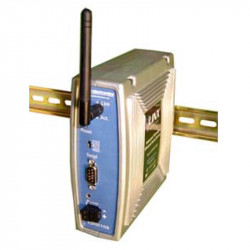
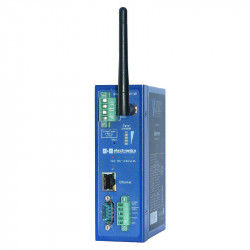
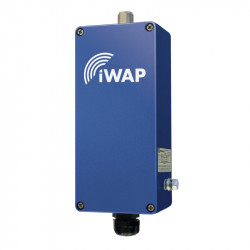
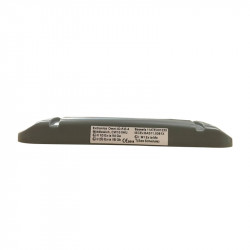
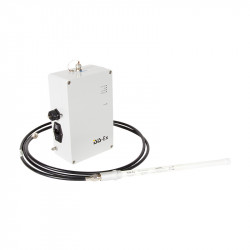
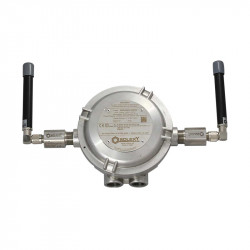
Leave a comment